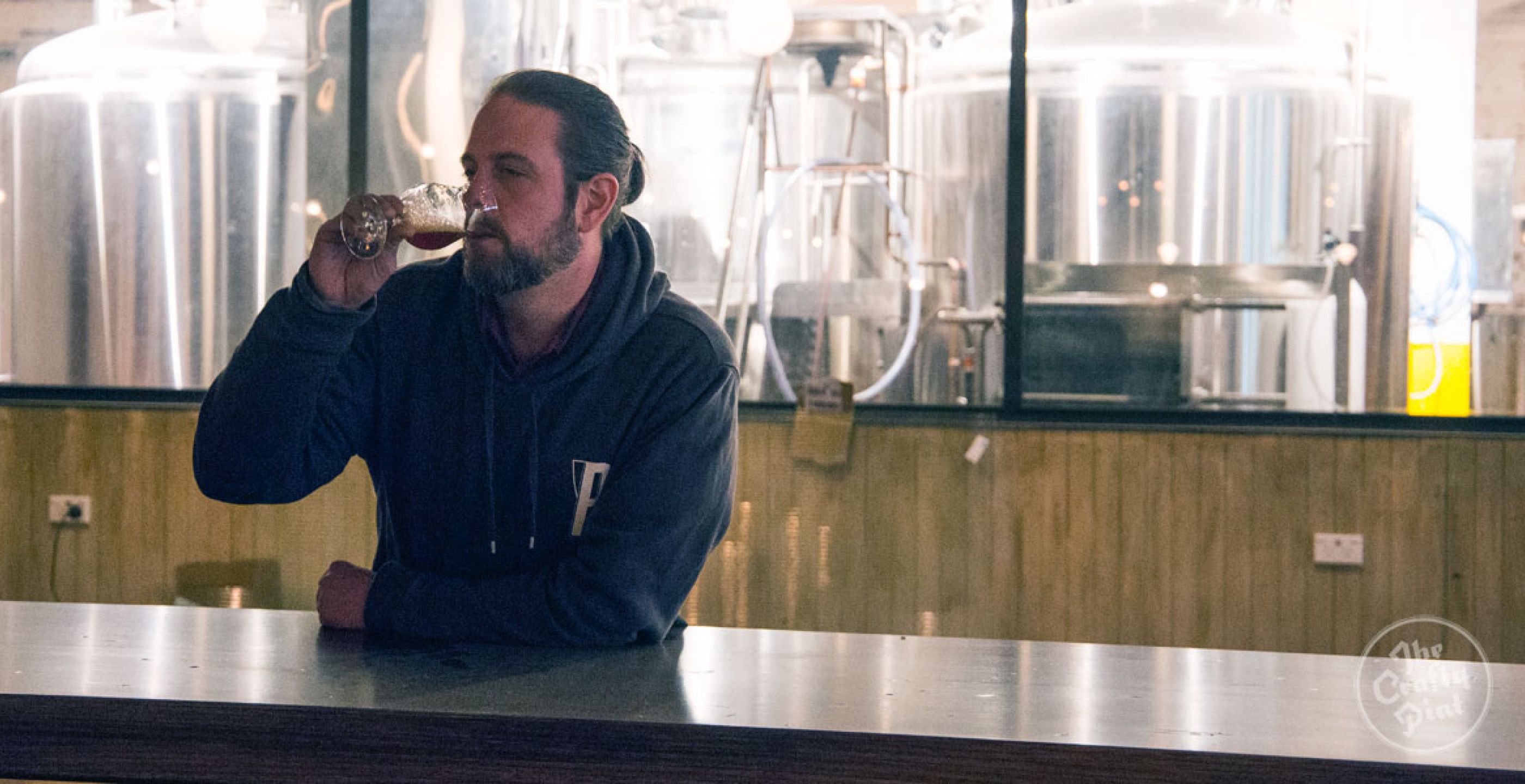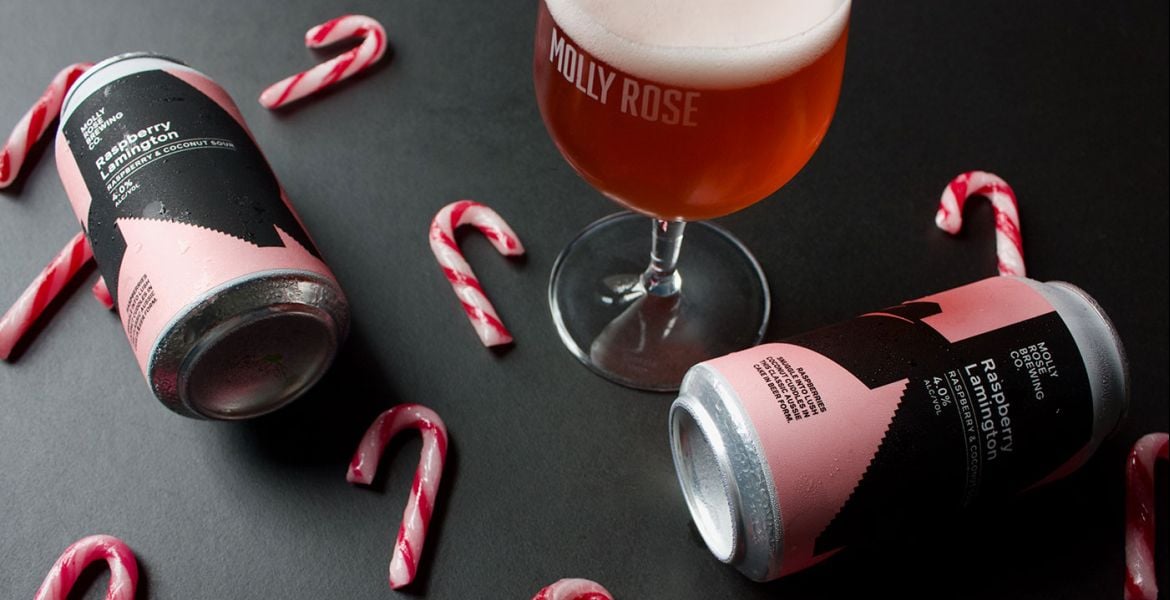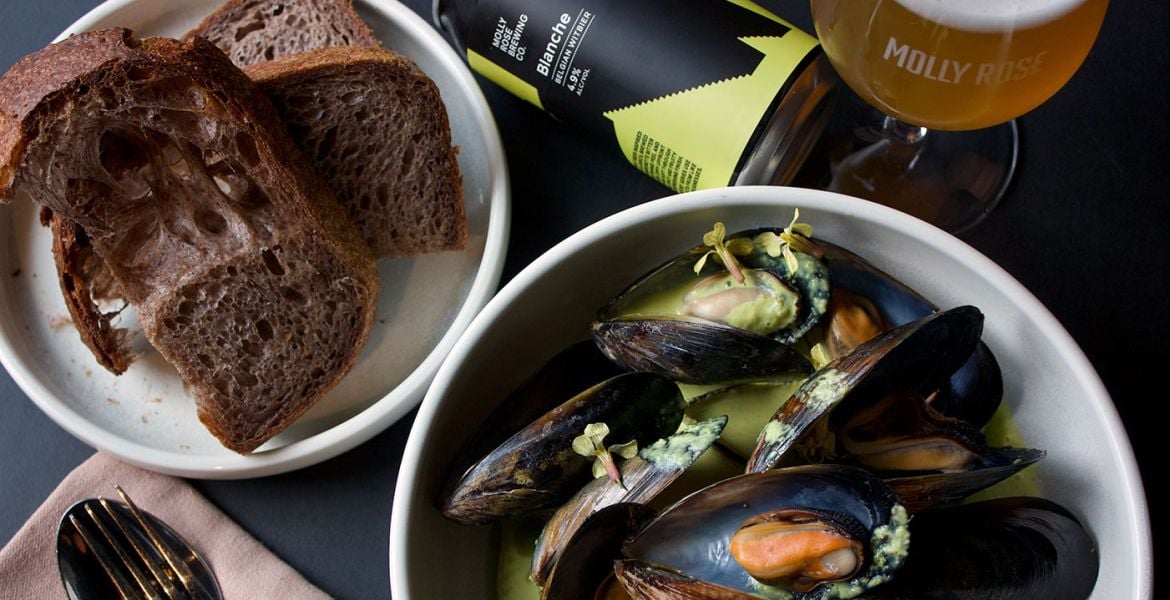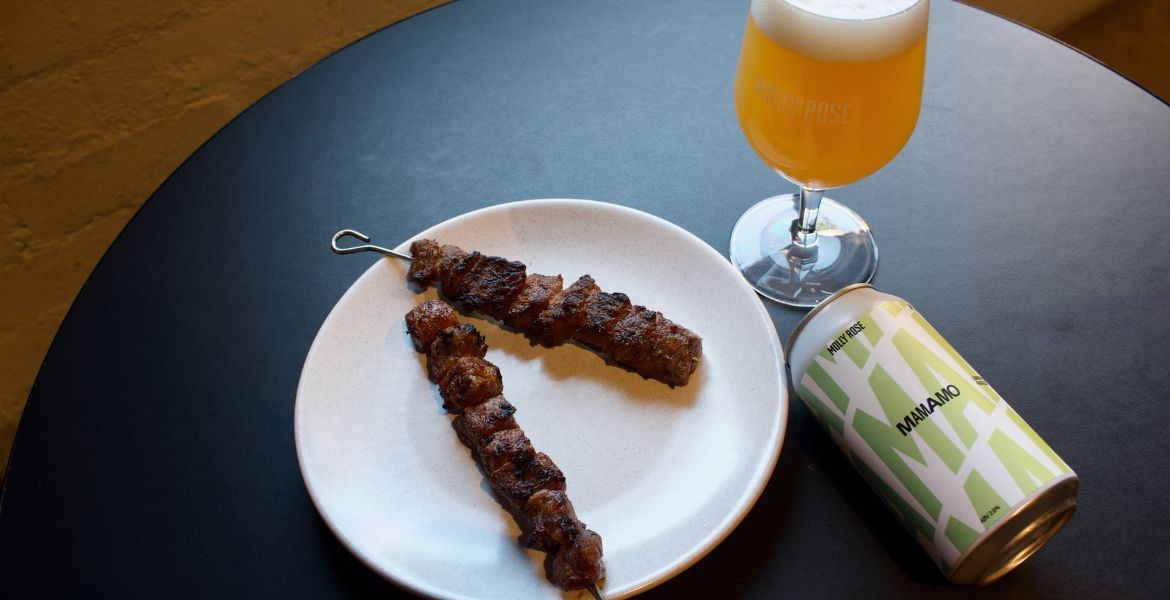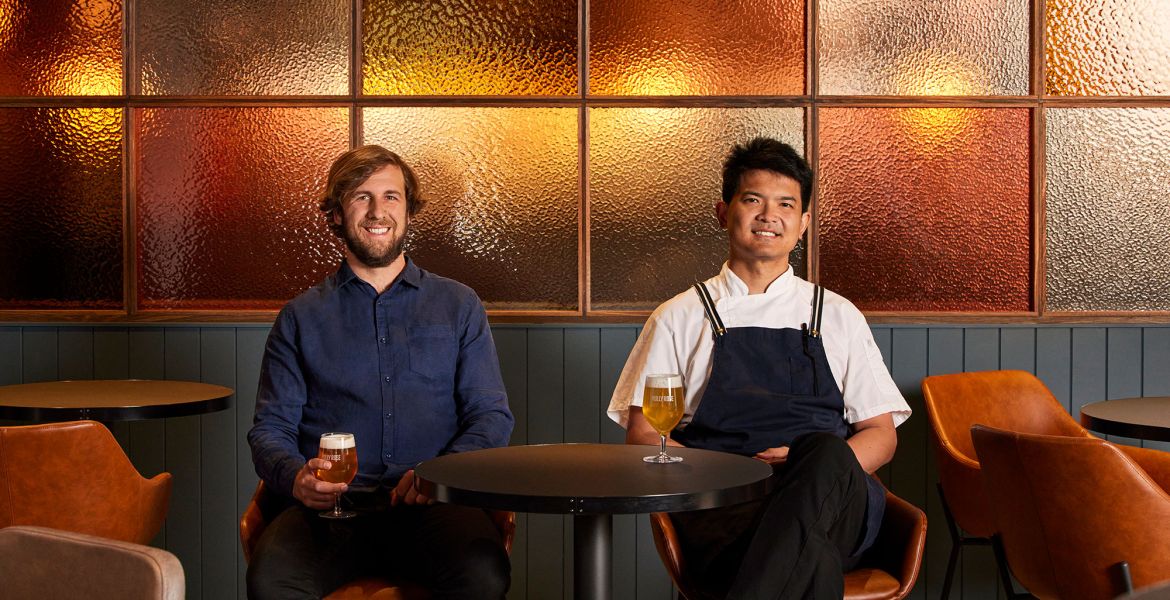In the past few years, beer and food matching events have played a small yet significant role as the local craft beer scene has matured. Particularly during beer weeks, but on other special occasions too, we've seen the concept explored in places as diverse as brewery floors and the 55th floor of the Rialto Tower. Yet it's a concept that, like the craft beer scene generally, is in its relative infancy compared to the US.
One chef who has played a central role in the development of beer and food matching in the States is Paul Kasten. Before moving to Australia, Paul worked in New York restaurants before finding his way to a leading venue in Portland, where he championed the virtues of beer matching and started a series of beer dinners with some of the finest brewers in the land.
Since then, his insights on beer and food have taken him around the US and abroad, to the point where he recently landed in Melbourne, where took up the head chef position at Stomping Ground in Collingwood (where Paul is pictured above).
As he prepared to serve up his first creations at the brewpub, we asked Paul to step in as a resident beer and food expert at The Crafty Pint. So, to kick things off, we find out how he came to forge a career from of a love of flavour, his role in the development of a beer dinner series in Portland, his thoughts on the local beer scene, and how he approaches pairing – with respect for beer at the root of everything.
How long have you been working in beer?
Paul Kasten: Since the late 1990s. I took some time off to figure out what I wanted to do and took a job at a local restaurant as a dishwasher. That quickly evolved to a cooking position with prospects of advancement to a management position that I just wasn't ready for at that age, so I looked again at going to university. I applied to several schools and decided to attend the University of Iowa, which has one of the best writing programs in the country, where I would pursue my interests in writing poetry and short stories.
I got a year into that and realised I wanted to be back in the kitchen, as there were things about it that I really missed. I pulled out of school, went into restaurant work, and soon moved to upstate New York where I got my first head chef job in my mid-20s. It was fun, but still a little more than I was ready for at that age. After that I went to culinary school in Vermont to round out my food education, and from there to Wildwood restaurant in Portland [a pioneer in farm to table dining]. I started as the intern and within a few years was sous chef, and eventually ran the beer program and started doing beer pairing dinners.
We took a simple fine dining beer program that involved four rotating taps and a handful of conservative bottle choices, and turned it into one of the most progressive beer programs I know of at that level of restaurant. By closing, we offered seven draught options, with lots of barrel-aged beers and one-offs, and a vintage / specialty bottle list of about 70 labels.
How did your interest in beer develop?
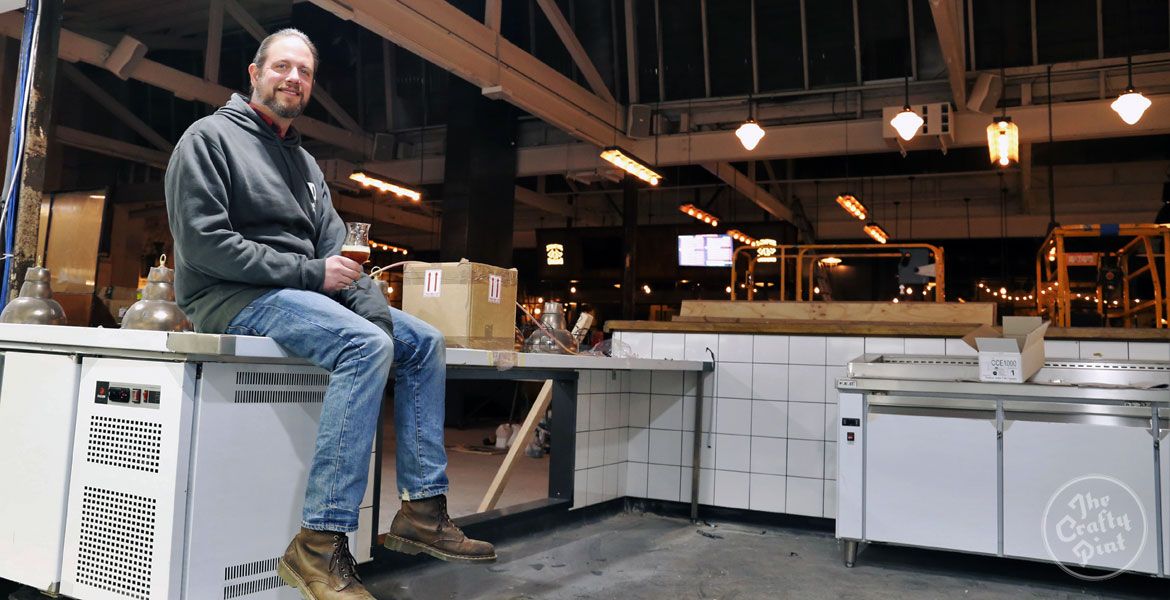
PK: During college I decided that since I liked beer so much I might as well get to know something about it. We had a fantastic bottleshop with 600 to 800 different brews, and I started working my way through the import coolers bottle by bottle. And it went from just, ‘Oh, I like this beer’ to starting to form an understanding of why I liked it. It was a neat moment of discovery.
It wasn’t until I got to Portland that I really started to engage with other beer geeks. When you realise that you’re seeing the same people at a lot of the events, you eventually start chatting to them, going to organised tastings, and getting to know some of the guys in the industry. It went from zero to crazy in a relatively short amount of time.
As a whole, I've found the beer community, both on the professional and consumer side to be full of wonderful, supportive people, many of whom are now great friends.
How did the beer influence how you thought about the menu at Wildwood?
PK: Around 2010, even in Portland, there was nobody doing anything serious with beer and food. As mainstream as craft is there, even in the better restaurants it was still a very basic beer program filled with standard import lagers and a few token craft offerings from the more established local brands.
We were kicking around ideas for events at the restaurant, and saw some opportunities in craft beer, so why not try and do a pairing dinner?
I contacted Pelican Brewery and we got a menu together using a bunch of their fancier, higher point beers – their funky Belgian stuff and barrel-aged beers. The tickets went on sale, sold in a few days, and we thought we must be on to something. I started approaching other breweries about doing similar things and, within a year, they were the ones approaching me asking if they could get involved.
It was so much fun, and so rewarding to be able to bring my biggest hobby to work with me, and through work become more engaged in this scene I enjoy so much.
When developing a matching menu, is it beer first or food first?
PK: Basically, I’d go to a brewery and taste everything in their lineup that could possibly be available, whittle it down to a list of six to eight beers that made sense in progression, then design a dish around making that individual beer drink as well as it possibly can. For me, what really makes a pairing work is respect for and understanding of the beer.
Having a solid understanding of ingredients and process on the beer side really helps on the menu planning side as well. You can understand taste and flavour as well as anybody, but if you don’t really know how the product is put together then it’s a lot harder to come up with a pairing that really works.
Imagine a chef trying to do a wine pairing dinner who has never heard of Pinot Noir. He or she wouldn't automatically know what flavours they’re looking for, or what they might expect to pull out of it, which would affect the decision making process and the quality of the pairing.
Do you have a theme for the evening, or do the beers lead you?
PK: I suppose my mood and where the beers take it. There are cases where there’s a dish I’ve been wanting to play with, so if it makes sense with the beer then that’s what happens. I try to avoid pushing things I want to do in cases where it would negatively impact the pairing, as it’s more about respecting the beer and what it brings to the table itself.
How did Portland change in your time there?
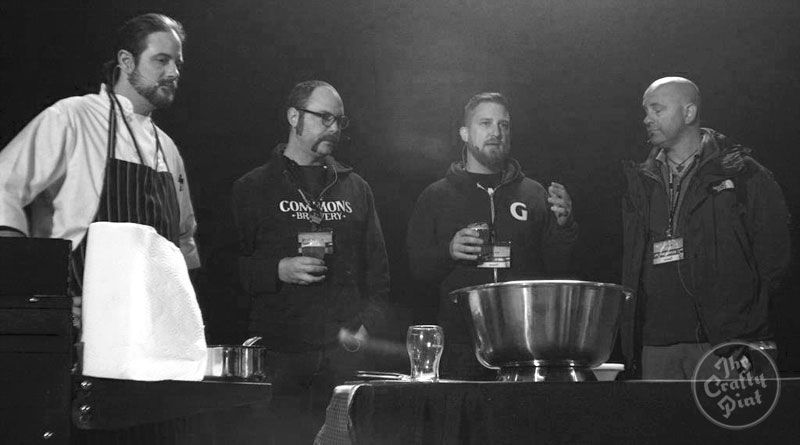
PK: Portland is now seeing a lot more respected chefs doing beer pairing work and expanding their restaurant beer programs. You see more of this popping up in cities like New York, San Francisco, Seattle, and Chicago these days too.
When did you begin travelling with your job?
PK: I was invited to cook at the farm to table pavilion at the Great American Beer Festival in 2012, doing two canapes paired with two beers, for crowds of 500 people per session. That was organised by Adam Dulye, who was the chef at Monk's Kettle and Abbot's Cellar in San Francisco, and is now the executive chef for the American Brewer’s Association. I worked that event three years in a row.
Wildwood closed in 2015, so I didn’t have a restaurant to represent and took a year off. I’m sure I’ll be back at some point.
It's great fun, and a chance to reach so many more people in a few days than I ever could with seated dinners. I also presented as part of a Portland brewers session at Wellington’s Beervana Festival in 2014.
Since landing in Australia earlier this year, how have you found the beer scene?
PK: We have a pretty young craft beer industry in Australia that’s doing a lot of good stuff. It’s moving in the way of innovation and high quality products.
I do worry about the big guys, as they are taking a lot of lessons from what’s happened in the States and applying it to a much younger industry here. If ABI, Miller Coors, etc woke up in the 80s and figured out it was a good idea to go after companies like Sierra Nevada and Boston Beer Company while they were still relatively young, things could have been quite different, as those now large craft brewers have done so much to support the growth of the industry over the years.
The US scene is developing so quickly and gaining market share so quickly that, as hard as they're trying with all of the buyouts and manipulation of distribution chains, shelf placement, etc, it's tough to imagine them making a real dent in the craft market. I think it’s grown to a point of consumer acceptance or awareness that we are over the hump.
But the scene here is so young and the brewers are still so busy getting their small businesses off the ground, that there’s not a lot of organised support as yet. I don’t see a lot of evidence of craft beer industry groups doing things like hiring professional lobbyists to go after tax laws and competition laws that strongly favour the big guys here at present.
What kind of craft venues do you enjoy working with?
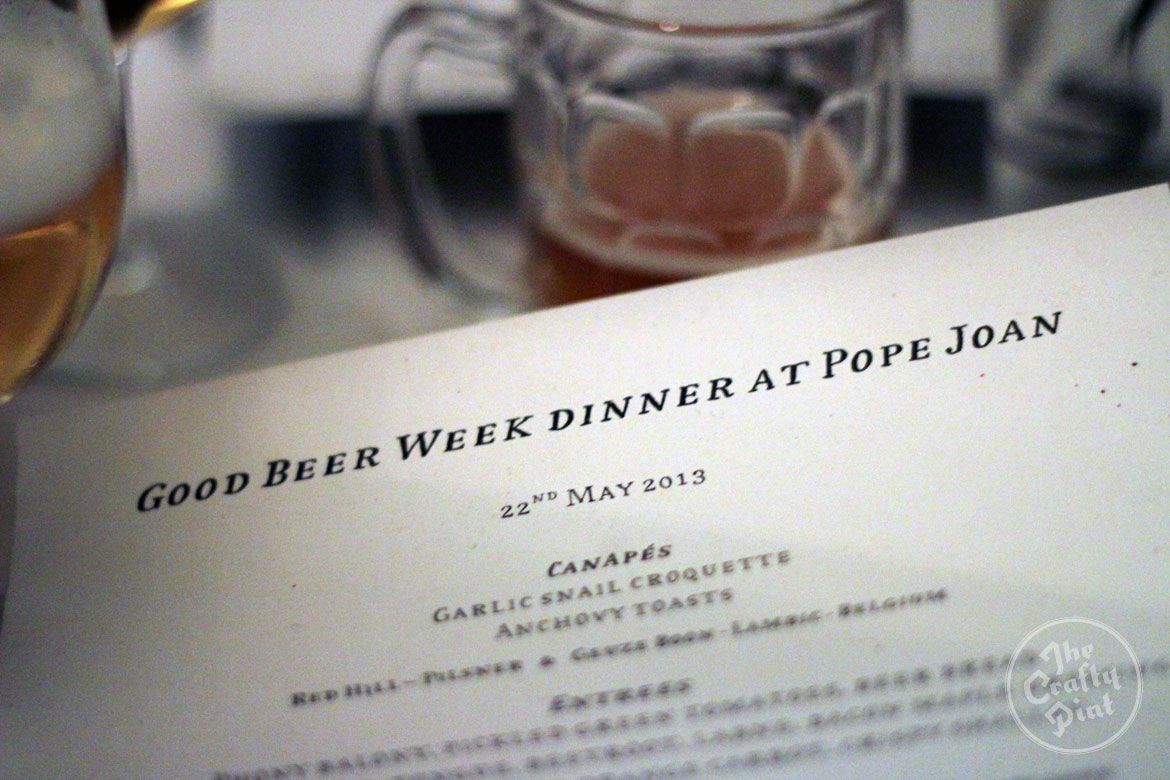
PK: From high end restaurants who support craft to more casual venues, there are great things about working with all of them. There is a lot of room to explore new things and expose new people to what craft beer is about.
In pubs it seems there is almost always too much focus on what operators seem to think all beer drinkers want to eat, so lots of burgers and fries and nachos and things like that. We’ve starting to move away from that, as new breweries opening are actually choosing to explore cool menus, with good cheeses, charcuterie and local foods, but I would really like to see more beer venues look beyond quick / fried / cheap when putting menus together.
So many restaurants still really need to look at their beer lists. They need to recognise that beer really does have a place at the table with fine food, and that the dining public is starting to catch on.
Looking at Melbourne, what would you like to see more of in the beer and food scene?
PK: It doesn’t seem like there’s a lot of beer and food matching going on in the market outside of events organised during Good Beer Week. There needs to be a lot more of that. Just doing those events on a venue by venue basis offers a great educational tool, not just for the idea that beer and food can work together and shouldn't be just for beer nerds.
This kind of event is great for your mainstream or introductory level craft beer drinker because it gets them thinking a lot harder about their beer and why they like it. They’re pushed into a situation where they’re more effectively analysing the flavours and working out what goes together.
Bringing more people into the fold and getting them more engaged is what craft beer needs to be all about to keep moving forward.
What are your plans for the food at Stomping Ground?
PK: The easiest way to describe our food would be "seasonally rotating farm-driven share plates." We will offer a broad menu of snacks, charcuterie, and small plates, many utilising beer or beer ingredients in their preparation. Things like salmon cured with Galaxy hops, a pork terrine made with spent grain from our brewery, malt butter made with wort from our brewery, and mussels. We have such great access to beer and ingredients, will always be experimenting with new ways to tie them into the food.
We will also offer a small selection of wood fired pizzas and tasty takes on a few pub classics. My goal is to present high quality beer-focused cuisine in a format that is interesting to the advanced beer drinker, while still feeling casual and approachable to the rest. I think sharing lots of small plates over drinks with friends very much embodies the warm, communal, and adventurous spirit that makes craft beer so special.
NB: Paul has since moved on and the menu has undergone changes since the venue opened.
BEER & FOOD MATCHING
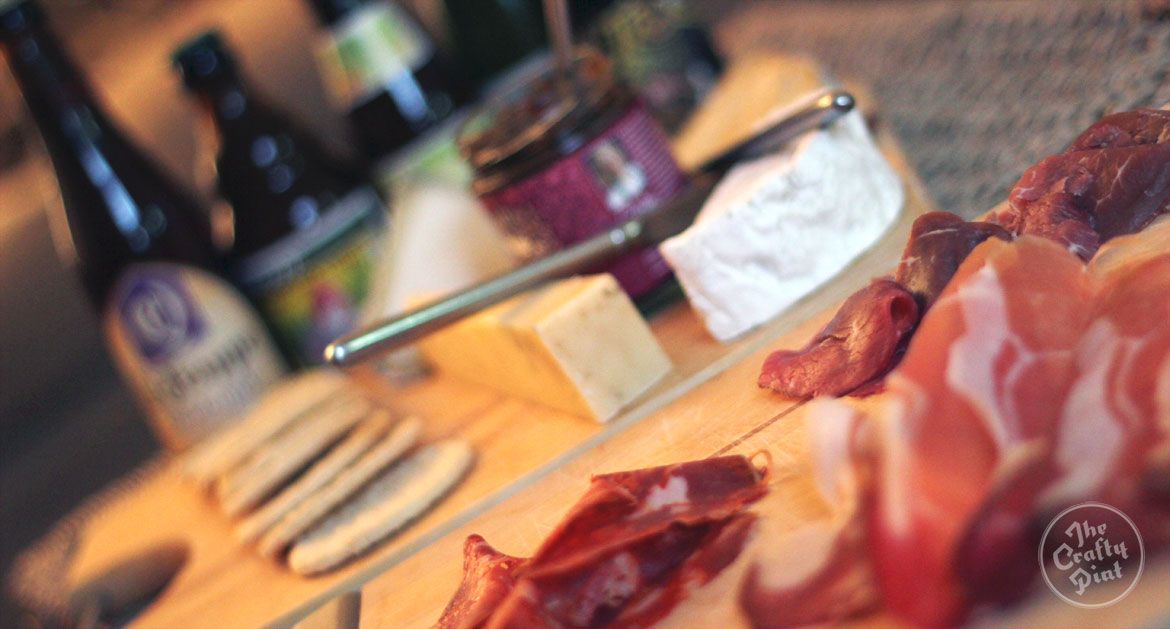
We asked Paul to offer up some of his favourite food and beer pairings, so you can indulge in a spot of your own beer matching at home.
IPA or a hoppy pale ale with blue cheese: The bigger the beer or hop profile, the bigger the blue.
Brett saison with artichokes: Take that, wine! Try this as a buttery pureed soup, simply steamed with butter, or on pizza.
Barley wine with grilled scotch fillet: Matching richness / maillard level in the beer to a rich, well seared steak.
Hoppy pilsner with herbal, spicy Thai or Vietnamese salads: Bright hop flavours as well as dry or bitter elements work wonderfully with the herb and chilli.
Marzen [typically darker, maltier, amber or copper coloured lagers] with pork rillettes and toasted baguette: Great match of levels of richness / maillard, while the bread ties into the grainy malt finish. Herbal or spicy noble hops match the spicing of the meat.
Thanks, Paul, and good luck with the opening of Stomping Ground. You can find out more about Paul and his work with beer here.
You can look out for more from Paul on the site in the future, as well as other beer and food focused features. At the same time, if you know of, or are involved in, a brewery or venue doing great things with beer and food, drop Kerry a line.
You can also check out the pre-opening tour we took with Crafty Cabal members.






